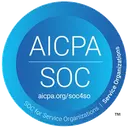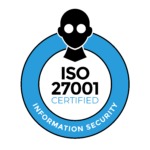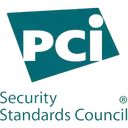NIST 800-37 establishes the Risk Management Framework (RMF), a comprehensive cybersecurity standard that governs how federal agencies and organizations handling federal information must manage security and privacy risks throughout system lifecycles. This framework has become essential for any organization seeking to implement robust, systematic approaches to cybersecurity governance, particularly those working with government contracts or handling sensitive data.
The framework exists because traditional cybersecurity approaches often treated security as an afterthought or isolated function. NIST developed 800-37 to integrate security and privacy considerations directly into organizational operations and system development processes, creating a continuous cycle of risk assessment and management rather than point-in-time evaluations.
NIST 800-37 compliance primarily applies to federal agencies, government contractors, and organizations handling Controlled Unclassified Information (CUI). However, many private sector organizations voluntarily adopt the framework as a cybersecurity best practice, especially those in critical infrastructure sectors or those seeking to demonstrate mature security postures to stakeholders.
What it is
NIST SP 800-37 Rev. 2 originates from the National Institute of Standards and Technology, part of the U.S. Department of Commerce. First published in 2010 and significantly updated in 2018, this publication represents the culmination of decades of federal cybersecurity evolution, incorporating lessons learned from previous frameworks while addressing modern threat landscapes.
The framework’s core purpose centers on providing a disciplined, structured approach to managing security and privacy risks that integrates seamlessly with your organizational operations. Rather than treating cybersecurity as a separate domain, NIST 800-37 embeds risk management into business processes, system development lifecycles, and organizational governance structures. Its scope encompasses everything from individual information systems to enterprise-wide security programs, creating a unified approach to risk management across all organizational levels.
Core requirements and principles
The NIST 800-37 framework operates through seven fundamental steps that create a continuous risk management cycle:
Prepare involves establishing organizational context and priorities for managing security and privacy risks. This includes defining risk tolerance levels, establishing governance structures, and ensuring adequate resources exist for framework implementation.
Categorize requires you to classify information systems and data according to potential impact levels if compromised. This step creates the foundation for all subsequent security decisions by establishing what needs protection and how much protection is warranted.
Select involves choosing appropriate security and privacy controls based on system categorization and your organizational requirements. You must balance security needs with operational requirements and cost considerations.
Implement focuses on deploying selected controls within information systems and organizational processes. This step requires careful coordination between security teams, system owners, and business stakeholders.
Assess mandates independent evaluation of implemented controls to verify they operate as intended and deliver desired outcomes. Assessment activities provide objective evidence of control effectiveness.
Authorize requires senior organizational officials to make explicit risk-based decisions about system operations. This step ensures accountability and appropriate risk acceptance at executive levels.
Monitor establishes ongoing oversight of security and privacy postures through continuous monitoring activities. This step enables you to detect changes in risk profiles and respond appropriately.
Types and categories
NIST 800-37 recognizes three primary authorization types that reflect different operational contexts and risk profiles:
System-level authorizations apply to individual information systems with defined boundaries and specific functionality. These authorizations address risks associated with particular applications, platforms, or technology solutions.
Common control authorizations cover security and privacy controls that provide protection to multiple systems simultaneously. Examples include organizational security policies, enterprise network security, or centralized identity management systems.
Hybrid authorizations combine system-specific and common controls to create comprehensive protection strategies. Most complex organizations rely heavily on hybrid approaches to balance efficiency with risk management effectiveness.
Additionally, the framework accommodates different deployment models including cloud services, mobile devices, and Internet of Things (IoT) systems, each requiring specialized consideration within the basic authorization framework.
Compliance process
Achieving NIST 800-37 compliance requires systematic progression through the seven-step RMF process, typically spanning 12-18 months for initial implementation depending on your organizational complexity and existing security maturity.
You begin with preparation activities that can take 2-4 months, involving senior leadership engagement, resource allocation, and foundational policy development. The categorization step usually requires 4-8 weeks as teams inventory systems and assess potential impact levels.
Control selection and implementation represent the most resource-intensive phases, often requiring 6-12 months depending on your existing security posture and system complexity. You must carefully sequence implementation activities to minimize operational disruption while building comprehensive protection.
Assessment activities typically span 2-4 months and require coordination with independent assessors who evaluate control effectiveness. Authorization decisions usually occur within 4-6 weeks following successful assessments, assuming no significant deficiencies require remediation.
Key roles include System Owners responsible for system functionality and security, Authorizing Officials who make risk acceptance decisions, Control Assessors who evaluate implementation effectiveness, and Risk Executive Functions that provide organizational oversight. Senior Agency Information Security Officers coordinate framework implementation while Senior Agency Officials for Privacy ensure privacy considerations receive appropriate attention.
Common challenges
Organizations frequently encounter several predictable obstacles during NIST 800-37 implementation that can significantly impact timeline and resource requirements.
Resource constraints represent the most common challenge, as comprehensive risk management requires substantial investments in personnel, technology, and processes. Many organizations underestimate the ongoing effort required for continuous monitoring and assessment activities.
Cultural resistance often emerges when business stakeholders perceive security requirements as impediments to operational efficiency. Successfully addressing this challenge requires demonstrating how systematic risk management actually enables business objectives by reducing uncertainty and improving decision-making.
Documentation complexity overwhelms many implementation teams, particularly those accustomed to less formal approaches. The framework requires extensive documentation of controls, assessments, and decisions that many organizations struggle to maintain consistently.
Integration difficulties arise when attempting to align NIST 800-37 with existing governance structures, particularly in organizations with mature but different risk management approaches. Successful integration requires careful mapping between frameworks and may necessitate process modifications.
Skills gaps frequently impact implementation quality, as the framework requires specialized expertise in risk assessment, security architecture, and compliance management that many organizations lack internally.
Benefits of compliance
NIST 800-37 compliance delivers substantial benefits that extend far beyond basic regulatory requirements, creating value for your organization across multiple dimensions.
Enhanced security posture results from systematic, risk-based approaches to control selection and implementation. You typically experience measurable improvements in incident detection, response capabilities, and overall resilience against cyber threats.
Improved risk visibility enables your senior executives to make informed decisions about technology investments, business strategies, and risk tolerance levels. The framework provides standardized metrics and reporting mechanisms that support data-driven governance.
Operational efficiency emerges through standardized processes, reusable control implementations, and clear accountability structures. You often discover that systematic approaches reduce overall compliance burden while improving effectiveness.
Stakeholder confidence increases as customers, partners, and investors recognize the maturity and rigor associated with NIST 800-37 compliance. This recognition often translates into competitive advantages and expanded business opportunities.
Cost optimization occurs through risk-based resource allocation, reduced incident costs, and improved vendor management. You can demonstrate return on investment through quantifiable risk reduction and operational improvements.
Who needs it and when
NIST 800-37 compliance requirements vary significantly based on organizational type, contractual obligations, and regulatory context.
Federal agencies must comply with NIST 800-37 as mandated by Federal Information Security Modernization Act (FISMA) requirements. These organizations face strict compliance deadlines and regular oversight from Inspector General offices.
Government contractors handling federal information systems or Controlled Unclassified Information must implement NIST 800-37 as specified in contract requirements. Defense contractors face particularly rigorous requirements under the Cybersecurity Maturity Model Certification (CMMC) program.

Related Posts
Stay connected
Subscribe to receive new blog articles and updates from Thoropass in your inbox.
Want to join our team?
Help Thoropass ensure that compliance never gets in the way of innovation.












.png)